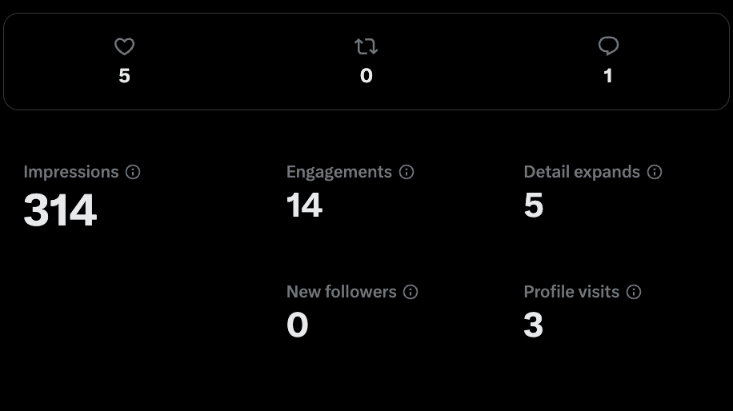Social media marketing can sometimes feel like talking to a brick wall when you’re a small business competing with more established brands. But it doesn’t have to be.
The good news about learning how to increase social media engagement is that social media platforms are already designed to help you do just that. It’s all a matter of using them the right way and finding the right people to engage with.
Social media engagement: What it is & why it’s important
If you ask what social media engagement is, the most common answer you’ll probably get is that it’s the combined clicks, likes, shares, and comments of a post. This isn’t technically wrong, but rather a simplistic definition of something much larger at play.
To get a more accurate picture of why social media engagement is important, consider the wider context of social media. There are about 5.56 billion people on social media, with brands all competing for the same limited attention. Engagement is what differentiates successful brands.
That’s why knowing how to increase social media engagement is important: It shows that people are taking the time and effort to interact with your brand, especially in a landscape of changing algorithms and policies. Social media engagement, measured by engagement rates, is proof that people care about your brand enough to interact with it, not simply scroll past it.
1. Publish content interesting enough to catch your audience’s attention
Quality content counts for a lot in engaging audiences. And that starts with knowing your audience’s interests and the topics that get their attention. Knowing your audience is fundamental to creating a social media engagement strategy because it’ll be the basis for all your content.
For instance, if you’re a bakery selling vegan doughnuts, your audience may be curious about what makes doughnuts vegan and what goes into the baking process. Or if you provide landscaping services, maybe your clients are interested in learning how to maintain a landscaping job.
Know what topics your audience is interested in so you can publish content that interests them enough to make them stop scrolling, check out your profile, and maybe even leave a like and comment — aka, engage with your brand.
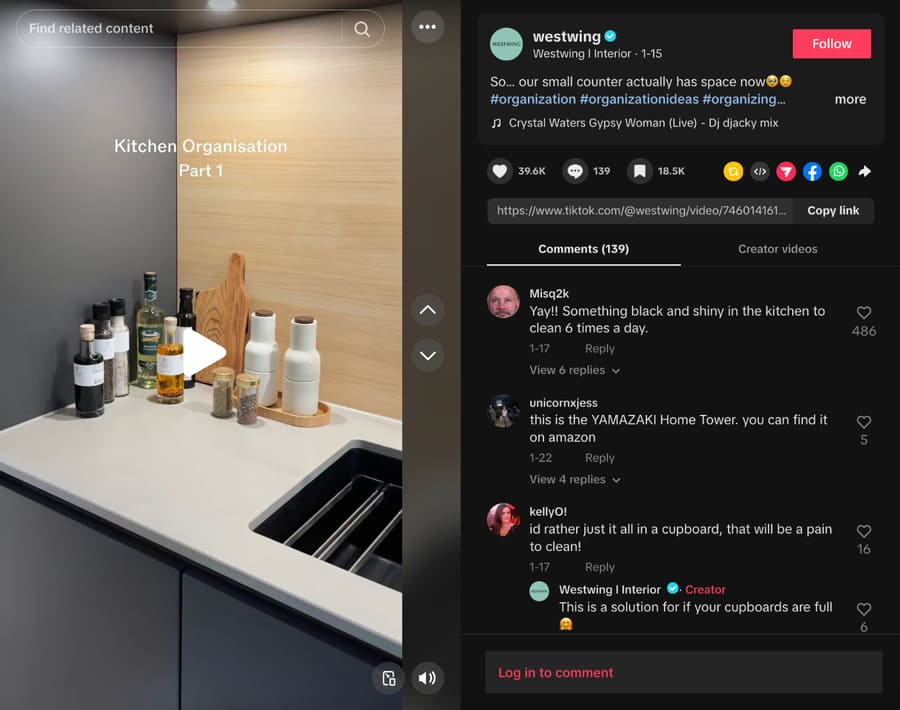
Maybe kitchen organization tips interest your audience if you’re an interior design brand, like West Wing. (Source: @westwing on TikTok)
2. Add something new to the conversation by posting content that your competitors aren’t
If you’re publishing content that your competitors are already posting, that won’t really capture people’s attention. Instead, give people a different angle, even if you’re both in the same industry and subject area. Analyze your competitors’ content and see how your brand can fill in any gaps.
For example, say your bakery sells vegan doughnuts and a competitor also sells vegan pastries. But your competitor only posts about the ingredients they use in their baking, not their actual baking process. To differentiate your content, you might post behind-the-scenes videos of your products being made or share recipes customers can try at home.
Another real-life example is Nissan and Honda, two competing car brands. Honda’s social media content showcases its car’s features, so Nissan went a different route and shared user-generated content (UGC) instead.
Don’t just repeat what everyone else is saying; contribute something new to the conversation by offering a unique perspective.
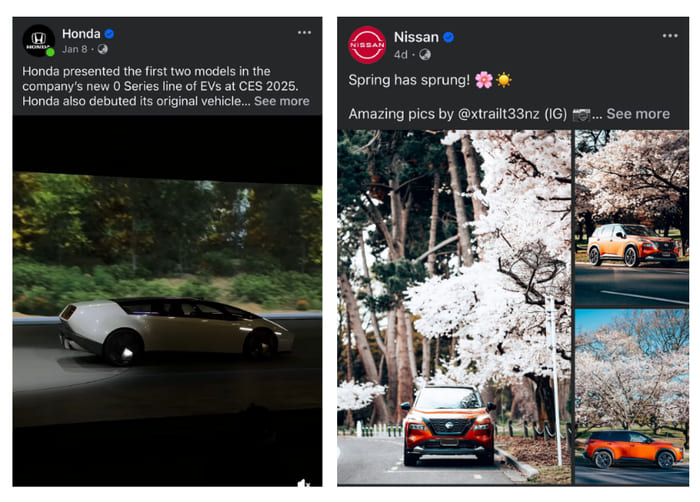
Honda’s social media focuses on its car features, while Nissan’s focuses on UGC. (Source: Nissan and Honda via Facebook)
3. Share something of real value to gain audience trust and keep them engaged
A lot of social media content is just noise, so the challenge is learning how to cut through all the noise and get to the people that matter. That’s why knowing the right content to share is also important in learning how to improve social media engagement. To stand out from the noise, publish genuinely valuable content and not just content for the sake of content.
Know what your audience is interested in, the pain points and challenges they face, and the values and causes they care about to create content that truly resonates with them. This makes your brand more credible and engaging.
For instance, say your vegan bakery’s audience cares a lot about the environment. So you might post blogs and infographics about how vegan bakeries like yours are helping promote sustainability.
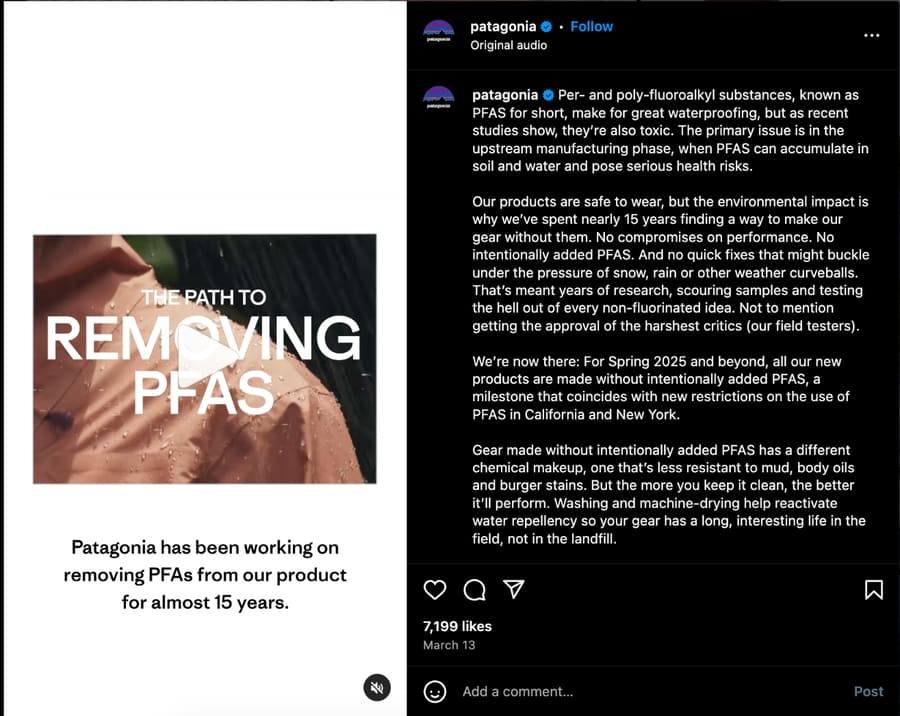
Patagonia’s core audience cares about environmentalism, so it constantly shares updates on its environmental impact. (Source: @patagonia on Instagram)
Pro tip: Create customer profiles to get a clear and well-rounded idea of who your audiences are as people and their interests, pain points, and buyer behavior.
4. Prompt conversations by asking interesting questions
Sometimes, all it takes is asking interesting questions to get conversations going on social media. They’re also one of the handiest tricks I keep in my back pocket if I ever need to increase social media engagement.
But again, don’t just ask any questions — ask questions that your audience would be interested in and that you have meaningful answers to. And of course, reply and engage with their answers to make them feel heard.
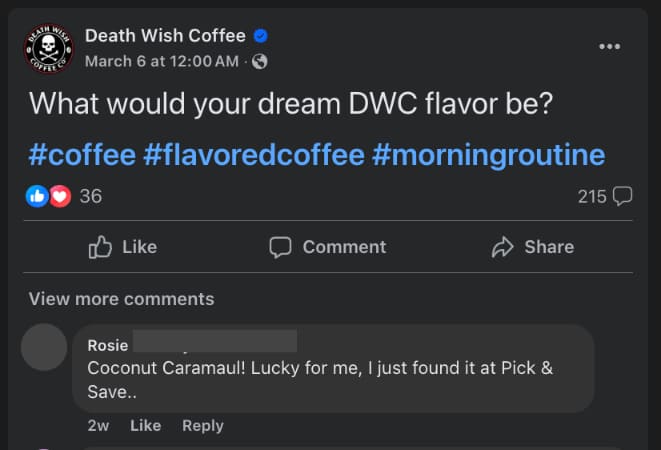
Sometimes, an interesting question is all it takes to increase social media engagement. (Source: Death Wish Coffee via Facebook)
5. Post consistently to stay in the audience’s feeds
Consistency is key in every relationship, including the one you have with your audience. Learning how to increase engagement on social media also involves posting consistently to keep your brand in your audience’s feeds. Aim to post between two and five times a week — social media statistics say that’s the sweet spot to keep your brand on audiences’ radars, but not too often that you become intrusive and redundant.
Consistent posting is crucial to increasing social media engagement. If you’re on multiple platforms, use social media marketing tools to make the planning and publishing process more efficient. Some of my best social media marketing tools for small businesses are Later, Hootsuite, and NapoleonCat.
- Later: An excellent and beginner-friendly social media planning and scheduling tool
- Hootsuite: A platform for managing comments and responding to messages from multiple platforms in one inbox, plus tracking social media trends
- NapoleonCat: An all-in-one social media toolkit for publishing content, tracking analytics, and creating user profiles
6. Use human, accessible language that people easily respond to
No one likes to engage with a brand that talks like a robot or a faceless entity. A key part of customer engagement strategy is using accessible, human, and relatable language, including on social media. Brands that sound friendly and welcoming are more naturally engaging than brands that constantly sell to customers or sound robotic.
Talk to your audience, not at them. Use the same language and tone they’re using to relate to them better, from your captions to your comments.
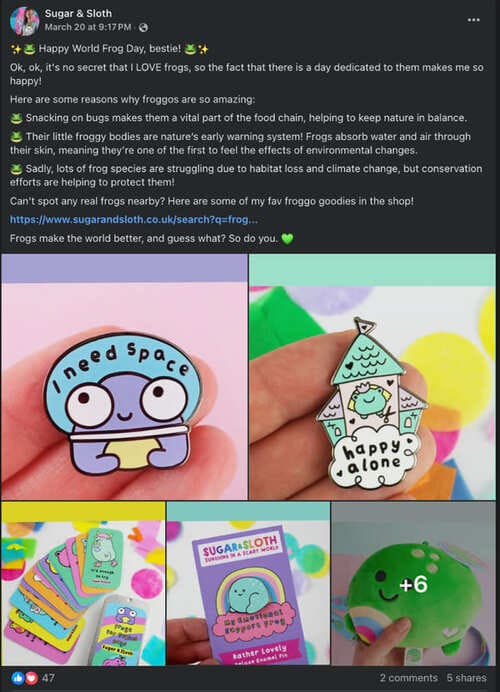
Using human language, like the stationery brand Sugar & Sloths, makes you more relatable and easier to engage with. (Source: Sugar & Slots on Facebook)
7. Mix up your formats to keep your content interesting
One of the easiest engagement techniques for social media is to post a good mix of different content types. You might do an image carousel with an infographic one day and then a behind-the-scenes video of your business the next, then post a relatable meme every now and then. This keeps your profile interesting, dynamic, and engaging.
A good estimate is to post two to four different types of content a week. Take note of the content formats that work well and make them a regular fixture in your social media plan.
8. Make content easy to understand (and interact with)
Social media audiences scroll quickly. They only have a few seconds to see and engage with your post. This is why one of my most underrated tips is to post content that isn’t just relevant and interesting, but also easy to understand.
Whether you’re posting an infographic, a product feature, or a blog post, audiences should be able to get the gist of your content in five seconds or less. Design it in a way that it’s impossible to misunderstand, and write a clear caption.
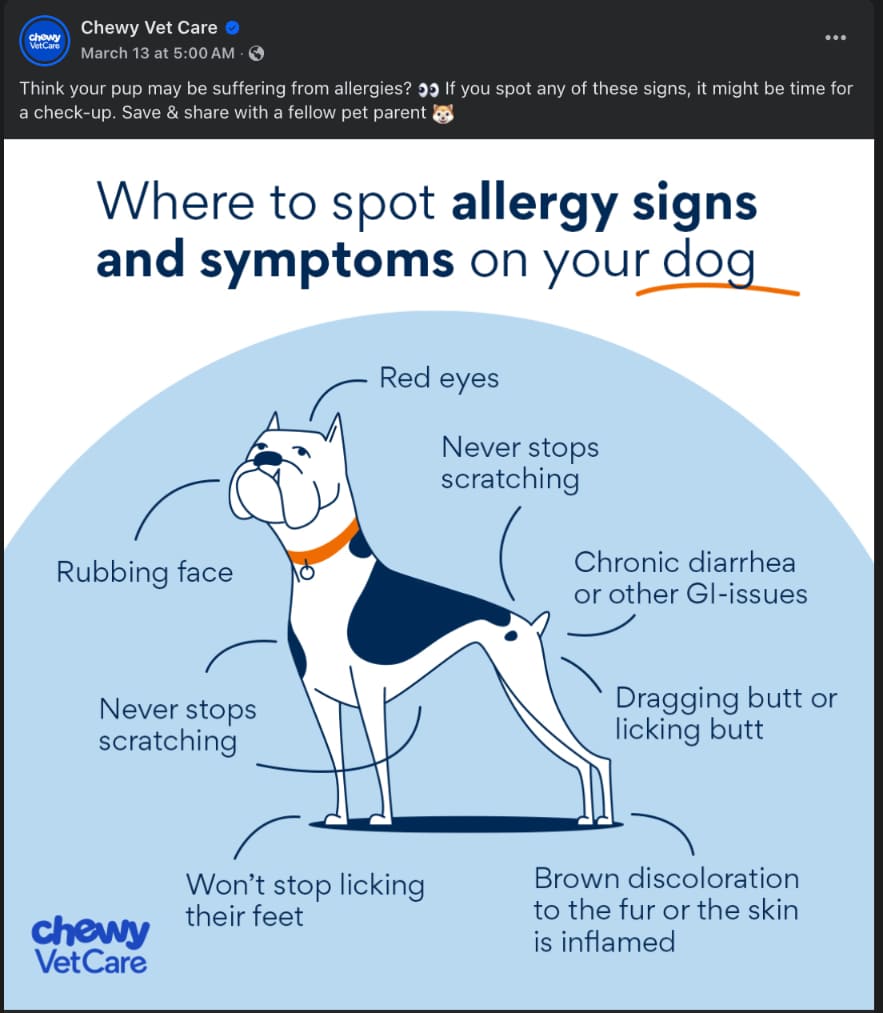
Make sure your content is instantly understandable. (Source: Chewy on Facebook)
9. Give clear calls to action to direct audience engagement
Social media can be a great way to encourage actions from your audience, like visiting your website or signing up for your lead generation form. But only if you give them clear instructions, such as whether to visit a website link, sign up for your event, or send you a message.
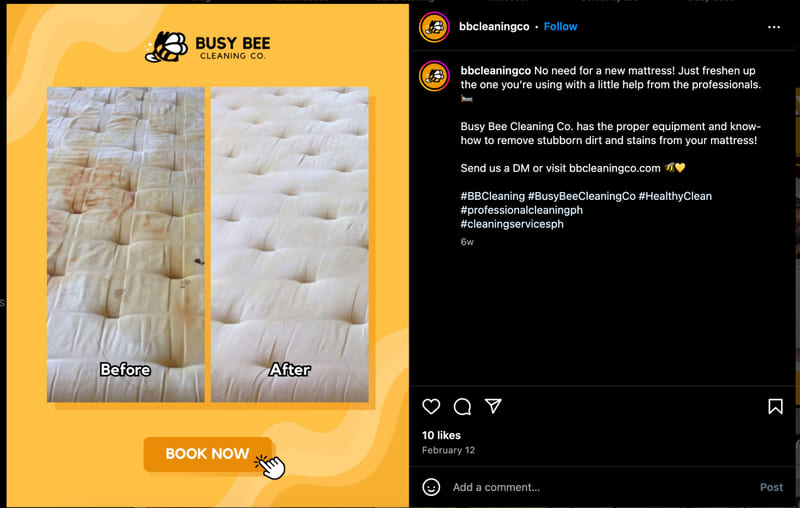
Give clear calls to action in your post, like sending a DM or visiting a website. (Source: @bbcleaningco on Instagram)
10. Reply to audiences’ comments and tags to stay in their notifications (and on their radars)
People use social media to have genuine, meaningful interactions, not just to consume content passively. So when users leave a comment on your post, participate in your question prompts, or tag your brand in a Facebook or Instagram Story, reply or leave them a reaction.
Replying to comments shows that you care about your audience and appreciate them as people, not just as customers. This is important because the most meaningful engagement happens in the comment sections — it’s where people share thoughts and feelings about your brand and build communities around shared interests.
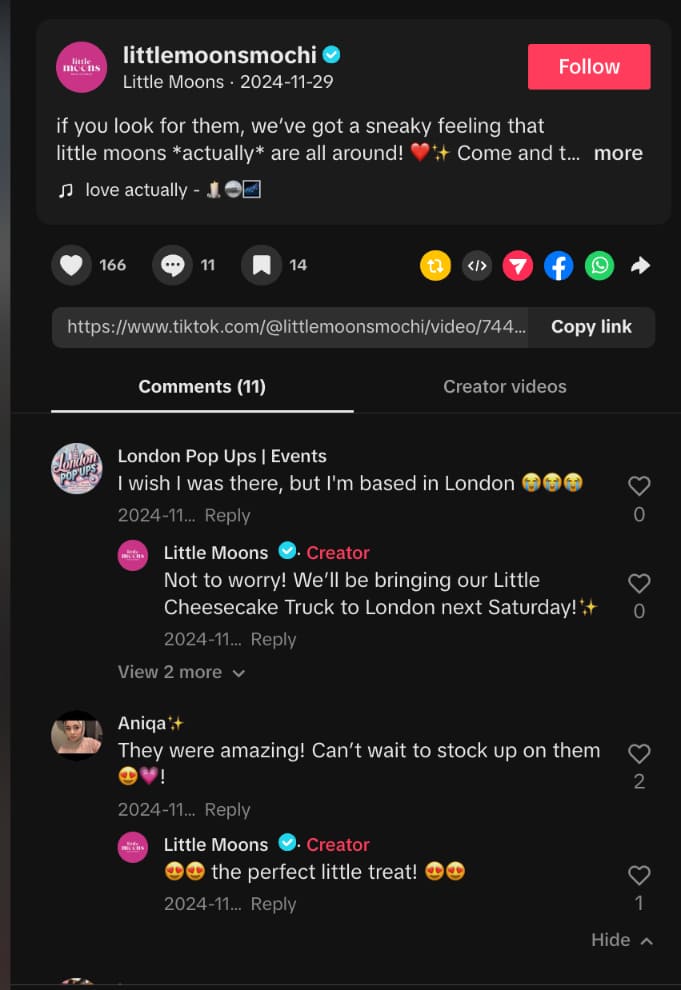
Replying to comments on social media is just as important for engagement as posting. (Source: @littlemoonsmochi on TikTok)
11. Spotlight your customers to build an active online community
Social media marketing is all about catering to your audience and building active communities that eventually become loyal fans of your brand. One of the best ways to do that is by spotlighting your customers to show your appreciation.
For instance, if they post photos of your product, reshare them on your profile. If you have a brick-and-mortar store, chat with your customers and ask to spotlight them on your social media. Spotlighting your customers also humanizes your brand and puts a face to your community with which online audiences can connect.
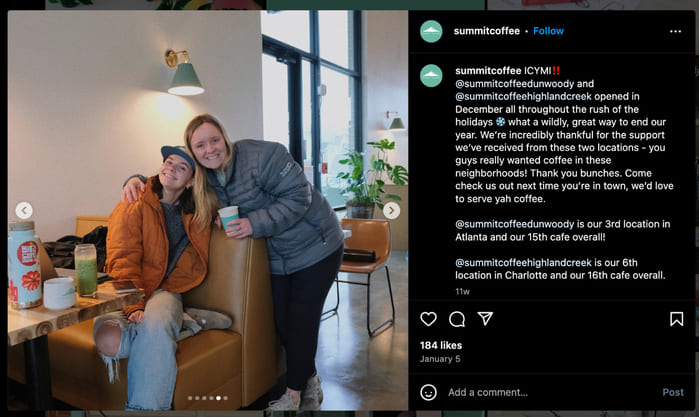
Spotlighting your customers humanizes your brand and puts a face to your community, making your brand easy to relate to. (Source: @summitcoffee on Instagram)
12. Share a unique take on trending topics to join conversations
Trends happen regularly on social media, and they’re a great way for brands to be part of current conversations. But to get people actually interested and engaged in what you have to say, share a unique perspective that no other brands have shared yet.
For example, for International Women’s Day, instead of posting the usual greeting, the organization Care International UK used AI to reimagine historical women in the modern era, giving a unique spin that stood out from other posts, while still having a cohesive and recognizable brand.
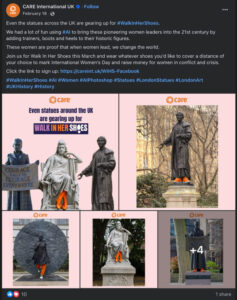
Care International UK put a unique, on-brand spin on the #InternationalWomensDay hashtag. (Source: Charity Care UK on Facebook)
13. Show the people behind your business to humanize your brand
Audiences today connect and engage with brands that don’t feel like brands but like real human beings. The more human your brand feels on social media, the more engaging it’ll be to audiences.
An easy way to leverage this is to post behind-the-scenes content about your brand, answer audiences’ questions, or go live on TikTok or Facebook to interact with your audience in real time. The key is to put the human side of your business front and center to make you easy to engage with.

Showcasing the team behind your brand helps your business be more human and engaging to audiences. (Source: @omybagamsterdam on Instagram)
14. Prioritize relatability over perfection to connect with human nature
The biggest change I’ve witnessed in social media in the past few years is the shift from ultra-polished perfection to raw, unpolished relatability and authenticity. From the prominence of unfiltered TikToks to Instagram content “dumps,” audiences increasingly connect with content that feels “real” and not sales-y.
So what does that mean for your social media engagement? Authenticity is the way forward in 2025. For each piece of content you post, whether an infographic, a behind-the-scenes video, or a new product announcement, aim for relatability over polished perfection to connect with your audience as real humans, not icons on a screen.
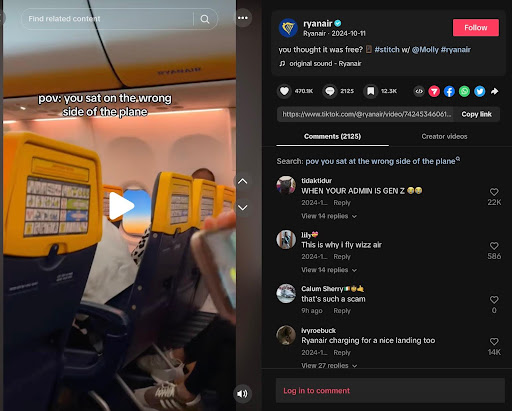
The European budget airline RyanAir’s TikTok strategy is built around relatability and humor. (Source: @ryanair on TikTok)
How to tell if your social media engagement strategies are working
The easiest way to tell if your social media engagement efforts are working is by looking at your engagement rates individually and over time. Engagement rates are the combined rate of how many clicks, reactions, comments, and shares your posts get. Anything above 1% is generally a good engagement rate across platforms, but the higher the number, the more engaged your audiences are with your content.
However, external factors like algorithm changes and platform ecosystems can easily fluctuate engagement rates. This is why I always evaluate engagement rates over time to get a clearer picture of their growth, like in the example below. It shows the engagement rate of a Facebook page I manage increasing by 325.8% over 28 days.
However, it wasn’t always steady growth—some days had high engagement rates, while other days, they dipped. What’s most important is that engagement rates steadily increased over that period, with most of the engagement coming from post shares.

Looking at your engagement rates over time gives you a more accurate picture of performance. (Source: Facebook)
However, engagement rates aren’t the be-all and end-all of your social media strategy’s success. While learning to increase social media engagement is good, the quality of your engagement is just as important.
You want to engage the right people for your brand and have meaningful interactions (i.e., relevant comments, replies, and reactions to your posts). Getting engagement is great, but the kind of engagement is just as important.
Frequently asked questions (FAQs)
Bottom line
Learning how to increase social media engagement takes more than just a few quick and easy shortcuts. Steady, meaningful social media engagement — the kind that turns followers into fans and fans into customers — is anchored on sharing relevant and valuable content to your audience and communicating with them meaningfully as humans, not customers. It’s also about finding the right people for your brand and interacting with them consistently.

